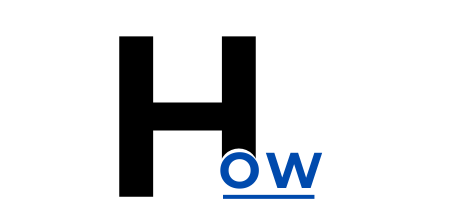Viruses and cyberattacks are evolving, targeting both individuals and businesses with increasing precision. Among these threats, browser hijacking has emerged as a potent danger, compromising personal data, business operations, and internet security. One notable example of this menace is the WebCord virus—a malicious browser hijacker causing disruptions and security vulnerabilities worldwide.
But what exactly is the WebCord virus, how does it affect your browser, and most importantly, how can you prevent and remove it? This guide will walk you through everything you need to know about the WebCord virus, the risks it poses, and the steps to stay protected.
What is Browser Hijacking and the WebCord Virus?
Browser hijacking occurs when a malicious program alters your browser settings without your consent. The WebCord virus represents one such nefarious program. Once it infects a computer, it takes control of the user’s browser to redirect them to unwanted websites, show excessive ads, or gather sensitive user information.
The WebCord virus specifically stands out because of its ability to alter default search engines, change homepage settings, and push users toward potentially harmful content. These intrusive alterations not only disrupt the browsing experience but also put personal and business data at significant risk.
Understanding and identifying this virus is critical to safeguarding your device and ensuring a secure browsing environment.
Signs Your Browser Might Be Hijacked
Wondering if your browser might be under the grip of the WebCord virus? Here are some telltale signs to watch for:
Sluggish Browser Performance
A hijacked browser often operates much slower than usual. Pages take longer to load, and the overall browsing experience feels frustrating and laggy.
Frequent Unwanted Pop-ups
If you’re bombarded with random pop-up ads—even when you’re not visiting ad-heavy websites—this is a major red flag. These intrusive ads are a hallmark of many browser hijackers, including the WebCord virus.
Changes to Your Homepage or Search Engine
A hijacked browser often changes your homepage or default search engine to unfamiliar or suspicious ones, leaving you unable to switch it back.
Redirected Searches
If your web searches suddenly take you to strange or unrelated websites, there’s a high probability your browser has been compromised.
Unexpected Extensions Installed
The WebCord virus may silently install harmful browser extensions without your knowledge. Check your browser’s extension list for any unfamiliar additions.
If you notice any of these symptoms, it’s time to investigate further.
How the WebCord Virus Infects and Spreads
Understanding how the WebCord virus spreads can help prevent infection in the first place. Here’s how this notorious browser hijacker commonly infiltrates devices:
- Free Software Bundles
The WebCord virus often comes bundled with free software downloads. When users fail to review the installation process carefully, the virus sneaks into their systems.
- Malicious Advertisements
Clicking on deceptive ads—often those promising free goodies or quick fixes—can automatically download the WebCord virus onto your device.
- Phishing Emails
Cybercriminals use phishing emails containing malicious links or attachments to trick victims into unknowingly installing the virus.
- Fake Browser Updates
Pop-ups claiming your browser is out of date and requiring an “urgent update” may actually be harboring the WebCord virus.
Once installed, the WebCord virus takes over the browser, monitors browsing activity, collects sensitive data, and places the user at risk of further attacks.
Impact of Browser Hijacking on Data Security
The implications of browser hijacking, especially by the WebCord virus, go beyond just frustration—they can have significant consequences for both personal and business data security.
For Individuals
- Data Breaches: Personal credentials like usernames, passwords, and financial details may be stolen.
- Privacy Risks: The virus can track your browsing activity, including sites visited and searches performed.
- Scams and Fraud: Redirected ads can trick users into making payments or sharing their information with fake websites.
For Businesses
- Loss of Data Integrity: The virus can collect sensitive business data, leading to confidentiality breaches.
- Productivity Losses: Hijacked browsers slow down workflows and cause significant downtime.
- Compromised Client Trust: If client data is stolen, it can damage long-term customer relationships and reputations.
Best Practices for Protecting Your Browser from the WebCord Virus
Prevention is always better than cure, and protecting yourself from the WebCord virus requires some proactive steps. Here’s how you can build a strong line of defense against browser hijacking:
Be Cautious with Downloads
- Only download software from reputable sources.
- Always choose the “custom install” option to monitor bundled apps.
Update Your Software Regularly
- Keep your operating system and browser updated to patch security vulnerabilities.
- Ensure your antivirus software is current and set to scan active threats.
Use Browser Extensions Carefully
- Install browser extensions only from trusted sources.
- Regularly review and remove unnecessary extensions from your browser.
Be Alert to Phishing Attempts
- Avoid clicking on suspicious links or opening attachments from unknown senders.
- Look out for phishing emails designed to trick you.
Enable Pop-up Blockers
- Most modern browsers come with pop-up blockers. Be sure to enable this feature to avoid potentially harmful ads.
How to Remove the WebCord Virus from Your System
If your device is already infected with the WebCord virus, here are the steps to remove it effectively:
Step 1. Uninstall Suspicious Programs
Navigate to your system’s app manager and remove any newly installed or unfamiliar programs.
Step 2. Clear Browser Data
Reset your browser by clearing cookies, cache, and history. Resetting often removes the hijacker.
Step 3. Check and Remove Extensions
Review your browser’s extensions and remove anything suspicious or unintended.
Step 4. Use Antivirus Software
Run an antivirus scan to detect and quarantine any threats, including the WebCord virus.
Step 5. Reconfigure Browser Settings
Restore your homepage and search engine preferences to their original settings after removing the virus.
Following these steps thoroughly will ensure your browser and device are free from the WebCord virus.
Stay Alert and Stay Safe
The WebCord virus and similar browser hijackers are growing threats in today’s digital age. However, by staying vigilant, knowing the signs of infection, and practicing safe browsing habits, both individuals and businesses can protect their personal and sensitive information.
Taking proactive steps like using trusted software or antivirus tools can greatly reduce the risk of browser hijacking. And, if you suspect your device is infected, act promptly and follow removal methods to restore your system’s integrity.
You May Also Like: Explore SpeedyShort.com for Quick Information
Conclusion
In conclusion, the threat posed by the WebCord virus and similar browser hijackers is one that should be taken seriously by both individual users and businesses. The potential for data breaches and privacy invasions, combined with the loss of productivity and compromised client trust, underscores the importance of preemptive measures. By being vigilant about software downloads, maintaining regular updates, and exercising caution with email communications and browser extensions, users can protect themselves from infection. Moreover, the outlined removal procedures offer a clear path to regaining control should an infection occur. Ultimately, by understanding these threats and implementing the recommended best practices, you can safeguard your digital environment against these persistent risks.
FAQs
What is the WebCord virus?
The WebCord virus is a browser hijacker that alters browser settings, redirects searches, and compromises user privacy by collecting sensitive data.
How can I prevent the WebCord virus?
To prevent the WebCord virus, avoid suspicious downloads, keep devices updated, and use reliable antivirus software.
Are antivirus tools effective against the WebCord virus?
Yes, reputable antivirus tools can detect and remove the WebCord virus. Ensure you use up-to-date antivirus software.
What should I do if my browser is hijacked?
If your browser is hijacked, uninstall suspicious programs, reset browser settings, and run a complete antivirus scan.
Can the WebCord virus impact businesses?
Yes, the WebCord virus can lead to data leaks, productivity losses, and compromised client trust for businesses.











